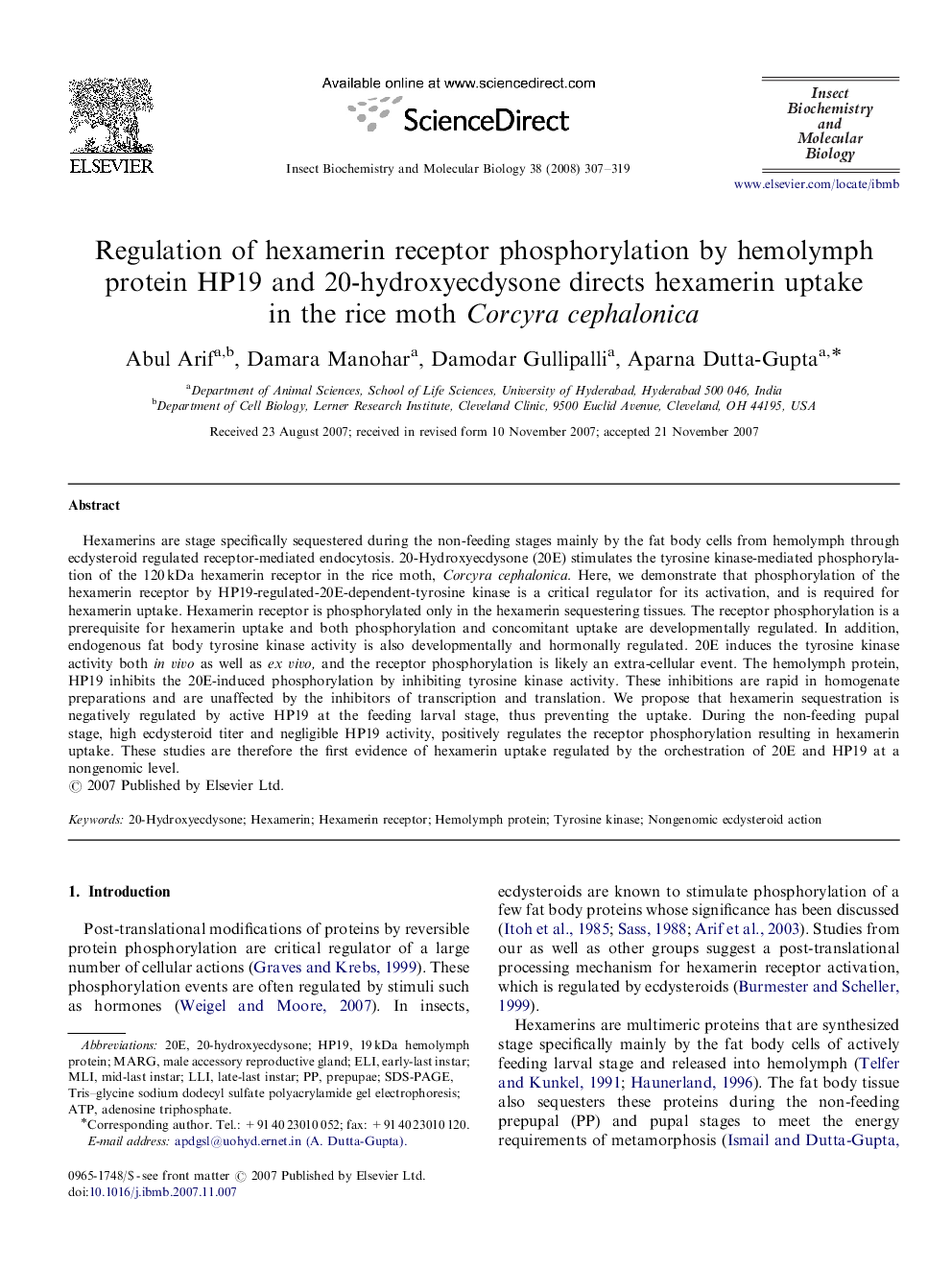| Article ID | Journal | Published Year | Pages | File Type |
|---|---|---|---|---|
| 1982918 | Insect Biochemistry and Molecular Biology | 2008 | 13 Pages |
Abstract
Hexamerins are stage specifically sequestered during the non-feeding stages mainly by the fat body cells from hemolymph through ecdysteroid regulated receptor-mediated endocytosis. 20-Hydroxyecdysone (20E) stimulates the tyrosine kinase-mediated phosphorylation of the 120Â kDa hexamerin receptor in the rice moth, Corcyra cephalonica. Here, we demonstrate that phosphorylation of the hexamerin receptor by HP19-regulated-20E-dependent-tyrosine kinase is a critical regulator for its activation, and is required for hexamerin uptake. Hexamerin receptor is phosphorylated only in the hexamerin sequestering tissues. The receptor phosphorylation is a prerequisite for hexamerin uptake and both phosphorylation and concomitant uptake are developmentally regulated. In addition, endogenous fat body tyrosine kinase activity is also developmentally and hormonally regulated. 20E induces the tyrosine kinase activity both in vivo as well as ex vivo, and the receptor phosphorylation is likely an extra-cellular event. The hemolymph protein, HP19 inhibits the 20E-induced phosphorylation by inhibiting tyrosine kinase activity. These inhibitions are rapid in homogenate preparations and are unaffected by the inhibitors of transcription and translation. We propose that hexamerin sequestration is negatively regulated by active HP19 at the feeding larval stage, thus preventing the uptake. During the non-feeding pupal stage, high ecdysteroid titer and negligible HP19 activity, positively regulates the receptor phosphorylation resulting in hexamerin uptake. These studies are therefore the first evidence of hexamerin uptake regulated by the orchestration of 20E and HP19 at a nongenomic level.
Related Topics
Life Sciences
Agricultural and Biological Sciences
Insect Science
Authors
Abul Arif, Damara Manohar, Damodar Gullipalli, Aparna Dutta-Gupta,
